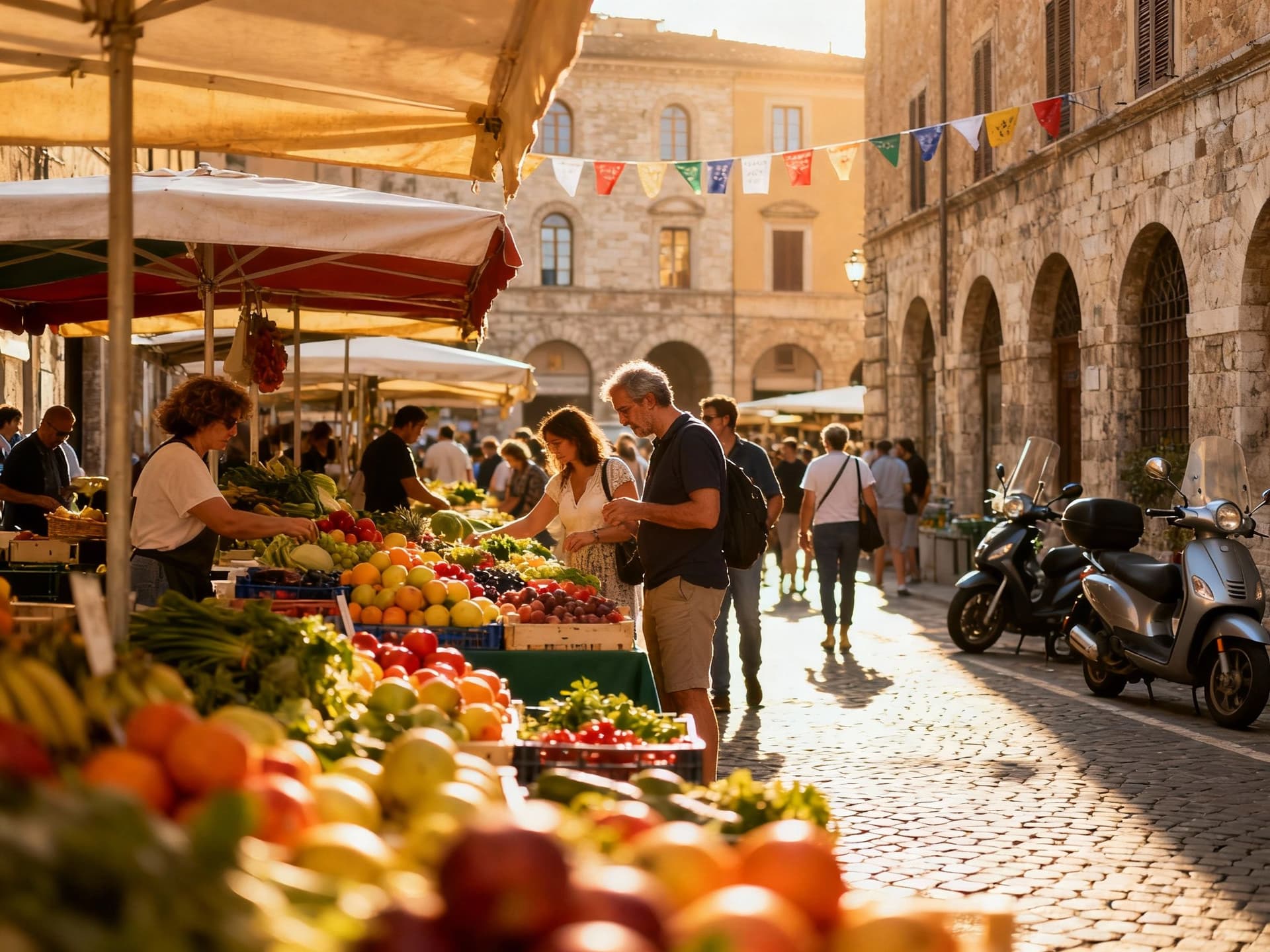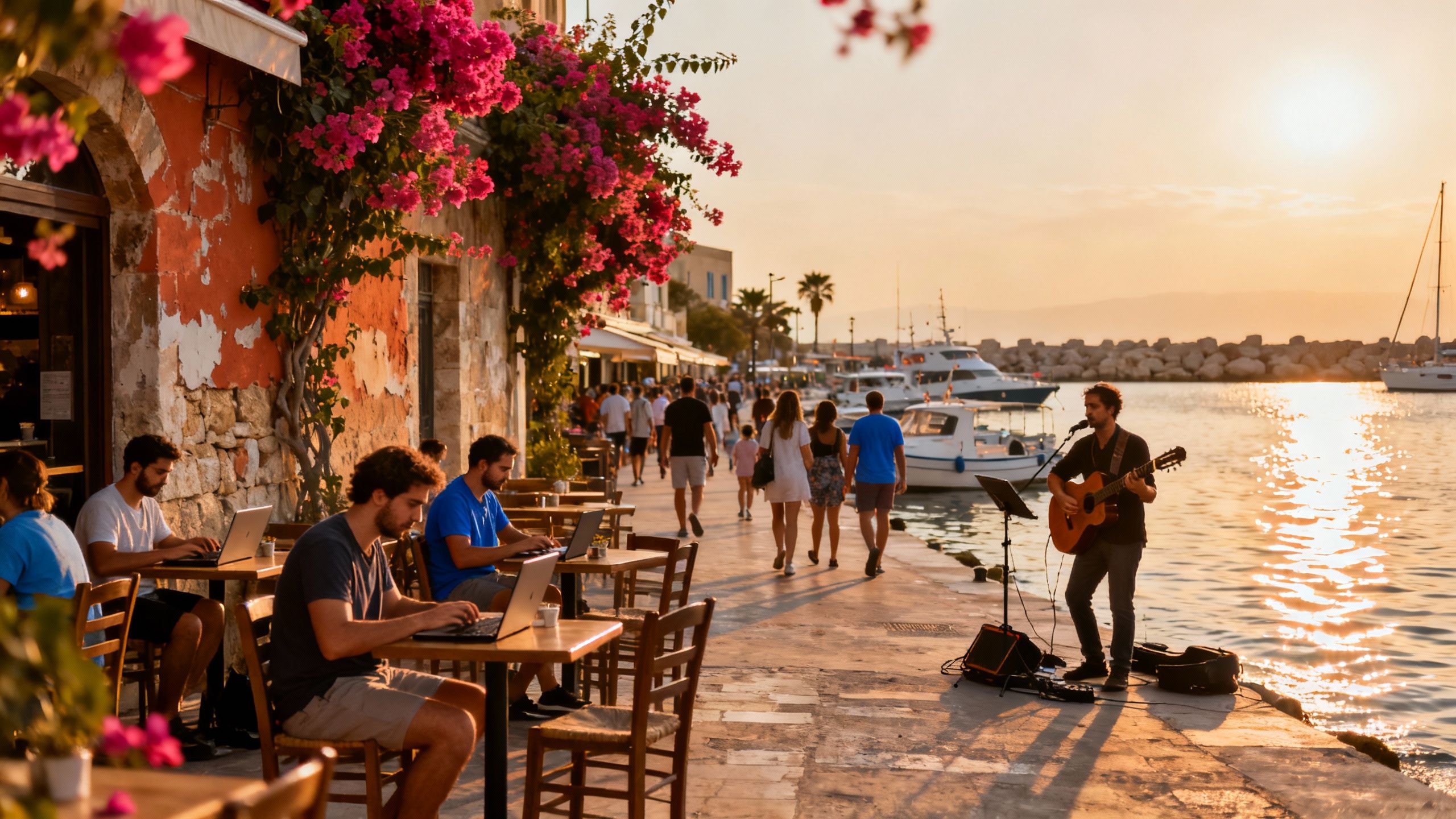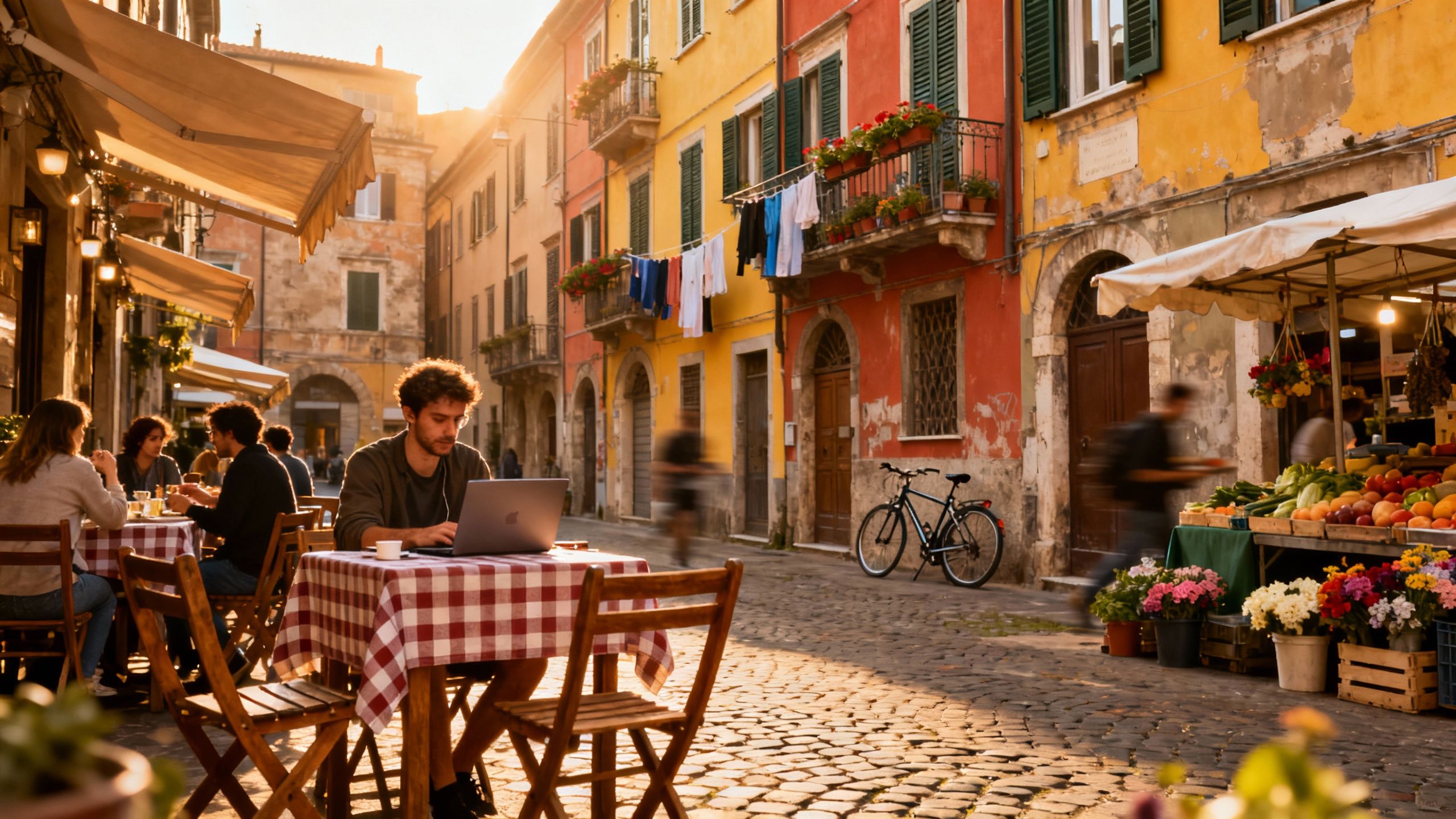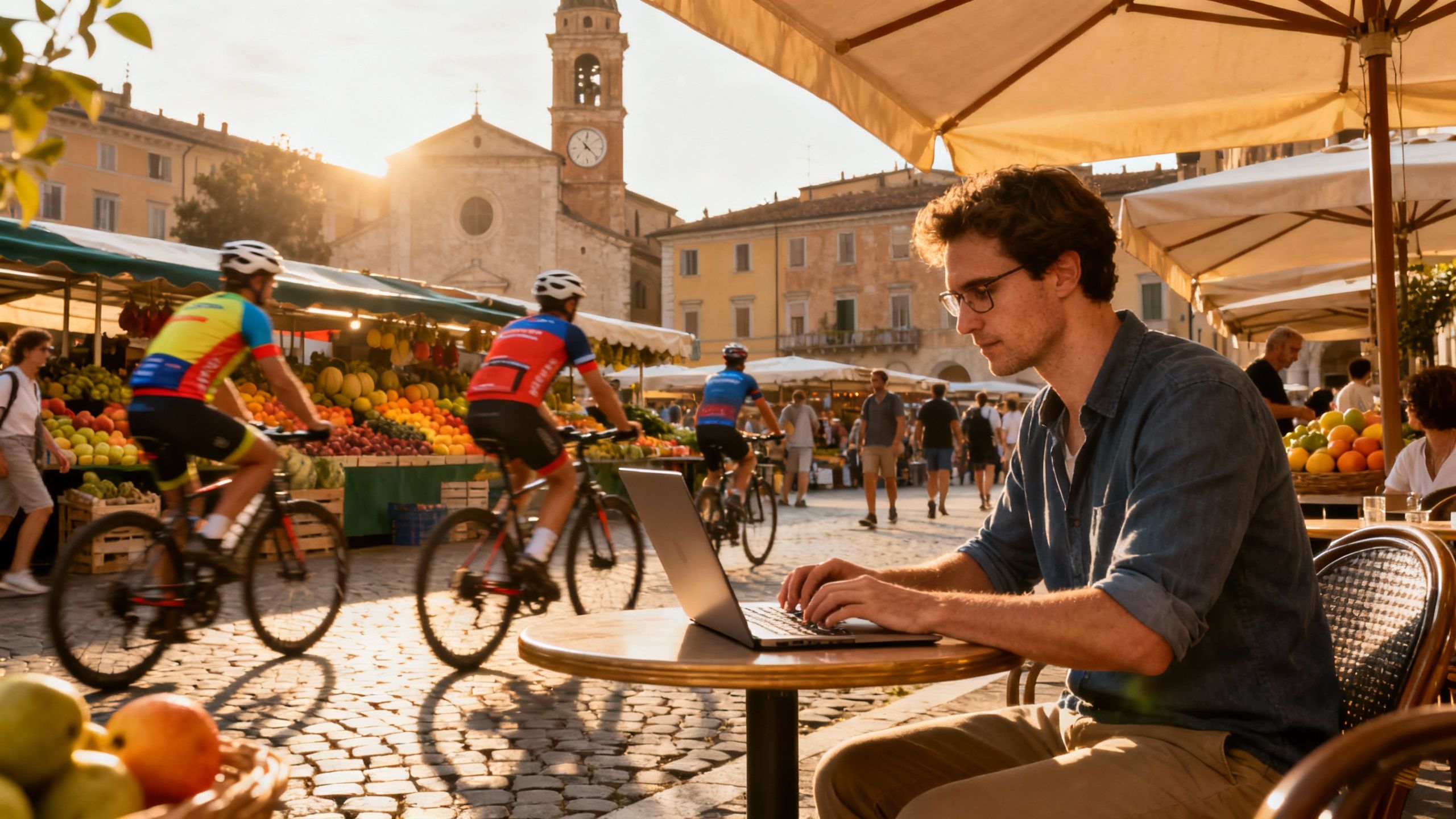Italy neighbourhoods: lifestyle-led buying advice
Fall in love with Italy’s rhythms — from Trastevere cafés to Milan coworking — while using ISTAT data and visa updates to plan practical, confident property moves.
Imagine sipping a late-morning espresso at a sunlit café in Trastevere, laptop open, a tram bell in the background and a market vendor calling out fresh produce nearby — that’s a weekday in Italy as a remote worker. Italy moves at a friendly, sensory pace: piazzas that double as living rooms, weekday aperitivos that stretch into dinner, and seasons that change the menu and the mood. For international buyers dreaming of life here, this guide mixes the delight of Italian everyday life with concrete, research-backed buying advice so you can fall for a neighborhood — and buy in confidence.
Living the Italy lifestyle

Italy is many Italies: alpine towns in the north, Renaissance cities in the centre, sun-drenched coasts in the south. Streets are layered with history — frescoed facades, local bakeries, and scooters weaving through laneways — but modern needs are present too: growing coworking scenes, cafés with reliable Wi‑Fi, and international flights from several hubs. House prices rose modestly in 2024–2025 with regional variation, so lifestyle choices and market research go hand-in-hand. (See national price trends from ISTAT and regional hotspots referenced below.)
Neighborhood spotlight: Rome, Milan, Florence and coastal gems
Rome’s Trastevere and Prati feel cinematic: cafes, winding streets, and every corner a photo op — expect atmospheric apartments (often older buildings with high ceilings) and variable broadband depending on wiring. Milan is efficient and design-forward; neighborhoods like Navigli and Isola mix coworking and nightlife with easier access to high-speed business services. Florence and Lucca reward slow-living lovers with artful streets and strong short-term rental demand in tourist seasons. For beach life, Puglia’s Polignano a Mare or Liguria’s Levante towns give sun, sea and more affordable second-home options than the big cities.
Food, markets and weekly rhythms
Weekends are for markets: fresh fish in Naples, truffle stands in Alba, farmers’ offerings in Bologna. Coffee culture is a ritual — quick standing espressos at the bar — and evening aperitivos are community-building. Seasonal festivals and slow Sunday lunches shape your social calendar, which matters when choosing a neighborhood: do you want to be in the thick of festival crowds or just a short drive away?
- Lifestyle highlights: actual places & moments
- Trastevere (Rome): cobbled lanes, late-night osterie, small English-speaking meetups
- Navigli (Milan): canalside cafés, coworking hubs, fast train links to airports
- Oltrarno (Florence): artisan workshops, quiet squares, close to museums
Making the move: practical considerations

Dreams meet logistics: you’ll want fast internet, clear visa status and an agent who knows local contracts. Italy opened a national digital nomad visa in 2024 with a 12‑month renewable stay for qualifying highly skilled remote workers (income and education thresholds apply). At the same time, ultra‑fast broadband rollout is improving but remains uneven — Northern cities and larger towns are better served than some rural areas. Factor these realities into neighbourhood choice and property selection.
Property styles and live/work fit
Historic apartments (palazzi) give character: high ceilings, thick walls and charming windows. But they may need wiring upgrades, better insulation and sometimes a lift. Modern condos near transport nodes offer plug-and-play life with reliable amenities and coworking access. If you want a terrace or small garden for work breaks, check orientation (sun in the afternoon) and noise levels — Italian streets can be lively late into the evening.
How local agents support a lifestyle-first search
- Work with agencies that understand nomads: ask for recent listings with verified broadband speed, proximity to coworking, and neighborhood community programs. A good local agent will arrange a live-walk tour, meet utility providers, and flag renovation permission rules — crucial if you want to repurpose a room into an office. Expect them to help navigate offer timing, tax estimates, and rental potential if you plan to monetize the property while away.
Insider knowledge: what expats wish they’d known
Buyers often underestimate bureaucracy timelines and overestimate how fast renovations happen. Expect residency paperwork, tax registration (codice fiscale), and utility activations to take time. Market data shows modest national price growth with strong regional differences —Rome, Milan and some coastal luxury pockets demand premiums while many southern towns remain significantly more affordable. Use official indices when budgeting and talk to an accountant about property taxes and rental income rules.
Cultural realities and community integration
Learning basic Italian unlocks markets and friendships — even a few phrases gets you better service at the bar and warmer neighborly invites. Join local expat meetups in English-speaking cafés or coworking spaces; many cities host weekly language exchanges and remote-work meetups that evolve into social circles. Italians value relationships — patience, politeness and showing interest in local culture pay dividends.
Long-term living: tax, healthcare and resale notes
If you plan to stay, register for a codice fiscale and meet residency requirements to access healthcare and local tax regimes. The digital nomad visa requires proof of income and health insurance; some applicants choose private plans before switching to the Italian system. For investment buyers, research regional property taxes, IMU rules for second homes, and likely rental demand by season — advisors and a trusted agency will save time and money.
- Quick actionable checklist before making an offer
- 1) Verify broadband availability and ask for recent speed tests; 2) Request neighborhood walk-through at different times (morning, midday, evening); 3) Get a local accountant to estimate taxes and closing costs; 4) Confirm permit history and renovation allowances; 5) Check short-term rental rules if you plan to sublet.
Italy is intoxicatingly beautiful and eminently livable for nomads who value food, culture and community. It also rewards planning: match the neighborhood to your work rhythm, verify connectivity, and partner with agents who speak the language of lifestyle and local law. Ready to be more specific? Start by listing three must-haves (fast internet, outdoor space, train access) and ask a local agent to show properties that tick those boxes — it’s the fastest way from ‘I could live here’ to ‘I live here’.
Danish investor and relocation advisor focusing on Portugal and the Algarve; loves coworking culture and expat networks.


